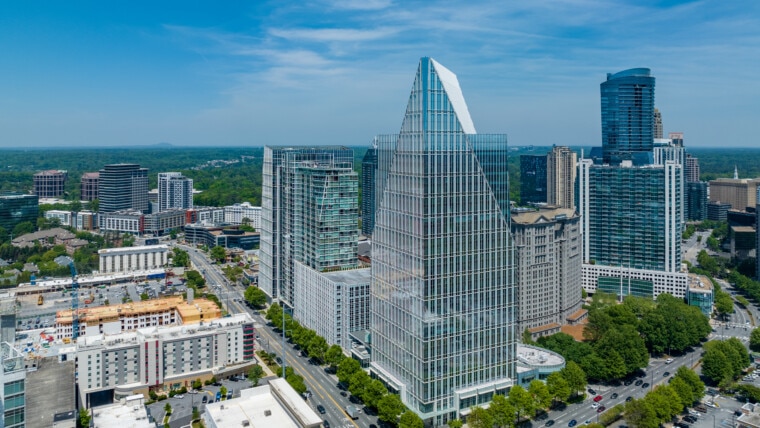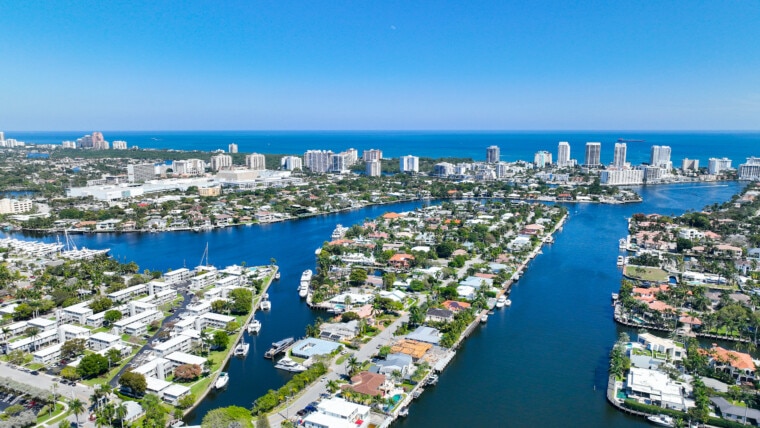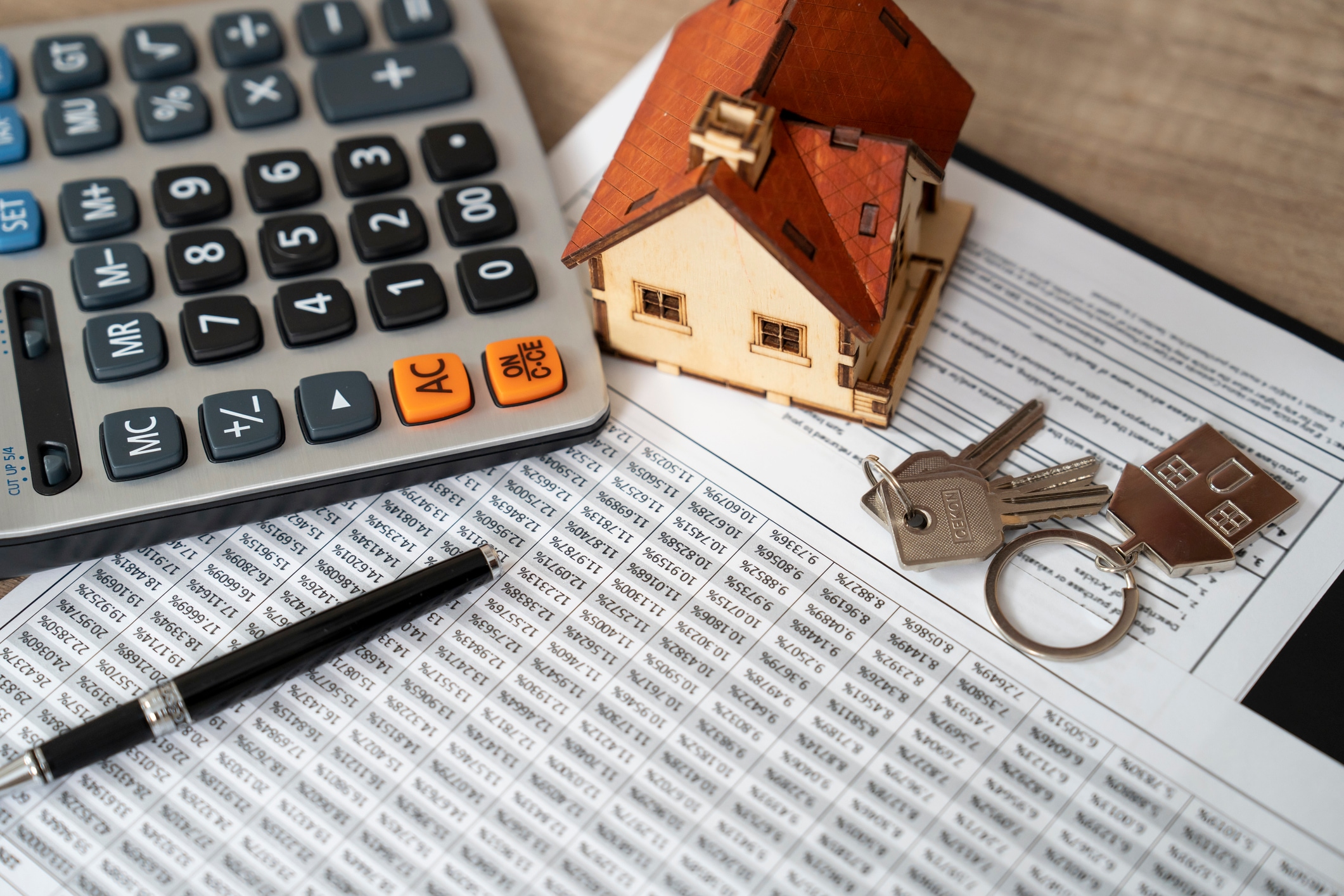San Francisco is well known for its iconic landmarks and unique natural landscape. Additionally, the city’s creative and passionate people have defined what it means to live here. Let’s break down what you need to know if you plan to call San Francisco home.
What’s It Like Living in San Francisco?
People love San Francisco for its walkability, natural beauty and diverse cultural landscape. The city proper is relatively small, at about 7 by 7 miles. However, it can take a lifetime to experience the restaurants, attractions and outdoor activities this place has to offer.

Fast Facts: San Francisco, CA
- Population: 873,965
- Median home value: $1.34 million
- Median household income: $136,692
- Unemployment rate: 3.6%
San Francisco Lifestyle and Culture
In San Francisco, “you’re allowed to be weird,” says Bonnie Spindler, a real estate agent with Corcoran Icon Properties and a longtime local. “This is the kind of place where people go to be themselves; It’s usual to be unusual.”
Though the city has changed over the past few decades, Spindler says it’s still a welcoming place. You won’t find as many hippies hanging around Haight and Ashbury, but plenty of people walk to the beat of their own drum.
Demographics and Community
The median age in San Francisco is 40, which is slightly older than the national average. However, the largest age group in San Francisco is between 30 to 34, according to the U.S. Census Bureau.
The city has long attracted immigrants from around the globe and LGBTQ+ communities seeking a welcoming environment. Today, it maintains a diverse cultural landscape, which is evident in its food, festivals and city politics.
“People think that when they move to a big city that it’s not going to be very friendly, but San Francisco is a really friendly city,” Spindler says. “I used to describe it as ‘going barefoot in your loafers,’ people are really down to earth.”

Cost of Living in San Francisco
San Francisco is one of the most expensive places to live in the country. Payscale reports that the cost of living is 79% higher than the national average.
Housing Expenses in San Francisco
The U.S. Census Bureau reports that the median home value in San Francisco is nearly $1.34 million. Rents are also high, with a median price of $2,308 per month.
Bay Area cities just outside of San Francisco offer greater affordability. For example, the median price of homes in Oakland, California, is about $890,000.
Homes in Vallejo are the least expensive in the region, with a median of about $540,000. It’s about 30 miles from San Francisco and has a commuter ferry into the city. Moreover, living here means you don’t have to leave home to enjoy the waterfront.
Average Monthly Costs
Utilities and other monthly expenses tend to be high in San Francisco, too. Payscale reports that the average monthly utility bill is $234, and grocery prices are about 30% higher than the national average.
The MIT Living Wage Calculator estimates that an adult with no children needs about $580 per month for transportation costs. However, this is likely lower for the nearly 33% of people who work from home.
Salary Requirements
To meet basic living expenses, the MIT Living Wage Calculator reports that a single adult needs to make at least $60,000 annually. Two working adults with two children will require a household income of $170,000.
Yes, the city has a high cost of living, though wages here are higher than most other parts of the country. The U.S. Census Bureau reports that the median household income in San Francisco is $136,692.
Is $100,000 Enough to Live in San Francisco?
Yes, a salary of $100,000 is enough in San Francisco, though it depends on where and how you live in the city. If you’re a single professional with no children, $100,000 is doable. If you’re raising a family on $100,000, it might be a challenge to meet your basic expenses.
Popular Neighborhoods in San Francisco
| Neighborhood | Median Price |
| Mission District | $1.25 million |
| North Beach | $1.15 million |
| Eureka Valley/Dolores Heights | $1.87 million |
It’s impossible to pick the wrong neighborhood if you’re looking at homes in San Francisco. “It’s all about exploring the little cities within the city,” Spindler says.

Mission District
Great restaurants and powerful public art define the Mission District, the historic center of Latino culture in San Francisco. Grab a giant Mission-style burrito and head to Mission Dolores Park, a sloping green space offering scenic views of the city.
Like many parts of San Francisco, the Mission District has seen demographic changes in recent years. Longtime institutions like Adobe Books and the bilingual neighborhood newspaper El Tecolote preserve and advance this community’s unique story.

North Beach
North Beach has a layered history as a historic home to Italian American immigrants and midcentury Beat poets. Though not on the beach, the neighborhood has large public green spaces where you’ll still find poets picnicking at Washington Square Park.
It is also highly walkable. North Beach is just a half mile from the Embarcadero and mere steps from San Francisco’s famous Chinatown. Predictably, the housing market is competitive, as people who live here generally don’t want to leave.

Eureka Valley/Dolores Heights
Eureka Valley/Dolores Heights encompasses the Castro District, a famous hub for LGBTQ+ history and culture. The neighborhood features Victorian homes with modern interiors, as well as a vibrant nightlife and small business scene. Locals look forward to the annual Castro Street Fair, founded by famed San Francisco politician Harvey Milk in 1974.
Best Neighborhoods for Young Families
| Neighborhood | Median Price |
| Noe Valley | $1.83 million |
| Inner Richmond | $1.95 million |
| Inner Sunset | $1.54 million |

Noe Valley
You’ll see more strollers in Noe Valley than in most other San Francisco neighborhoods. This tight-knit community has a high density of parks with unique play equipment. There’s also a library branch and the Upper Noe Recreation Center. Bakeries and small businesses line 24th Street, which is also home to a Saturday farmers market.

Inner Richmond
Inner Richmond is sandwiched between the Presidio and Golden Gate Park. It’s ideal for families looking for easy access to museums and outdoor fun. Parents can walk their kids to one of three public schools as well as the Richmond/Senator Milton Marks Public Library.

Inner Sunset
Inner Sunset has similar proximity to Golden Gate Park attractions like the California Academy of Sciences museum and the Koret Children’s Quarter. The neighborhood is a bit more walkable and less foggy than its neighbor, Outer Sunset, while still sitting just 2.5 miles from the Pacific Ocean.
Best Neighborhoods for Professionals
| Neighborhood | Median Price |
| Marina District | $2.12 million |
| Pacifica Heights | $1.98 million |
| SoMa | $745,000 |

Marina District
The Marina District has a youthful energy right by the Presidio and close to the Golden Gate Bridge. Life here includes morning jogs along the marina and nights out on Chestnut, Filmore or Union Streets. You can hit the Sunday farmers market at Fort Mason or play softball at Moscone Park.

Pacific Heights
South of the Marina, Pacific Heights has similar access to restaurants and lively bars on Union and Fillmore. There are also two dog-friendly parks. Both Alta Plaza Park and Lafayette Park have beautiful city views and off-leash areas for pets to play.

SoMa
South of Market, or SoMa, has a newer housing stock and a growing restaurant scene. It’s close to jobs in the Financial District and city attractions like Oracle Park — home of the San Francisco Giants — and the Embarcadero.
Housing Options: Renting vs. Buying
In a place as expensive as San Francisco, it can be hard to figure out whether renting or buying is the right financial move.
An analysis from the San Francisco Chronicle estimates that it takes about 20 years for a new homeowner to reach the break-even point, or the point where owning becomes cheaper than renting.
Of course, this estimate doesn’t factor in the extra costs that come with renting, such as moving expenses and frequent rent increases.
Pros of Living in San Francisco
- Mild weather: The weather here typically stays in the 60s year-round, a definite plus for anyone looking to escape harsh winters or scorching heat. If you’re looking for sunny summers, however, look elsewhere. The Bay Area fog has its own name — Karl — and is most prominent during the warmest months.
- Jobs: Silicon Valley and tech companies are tied with San Francisco, which is a major draw if you’re in the business. Google, Apple and Facebook are major employers here, as is Salesforce, which has an iconic tower downtown.
- Beauty all around: Between the natural landscape and the Victorian architecture, San Francisco is just a gorgeous place to live.

Cons of Living in San Francisco
- High cost of living: Of course, all the benefits of living here come with a price. It’s more expensive to rent or buy a home in San Francisco than it is in most of the U.S.
- Traffic and parking: You don’t have to have a car to live in the city, but if you decide to drive, be prepared to sit in heavy traffic and compete for parking.
- Effects from wildfires: In recent years, the Bay Area has seen more smoke pollution from local wildfires, most often in the late summer and fall.
- Homelessness: While San Francisco is one of the richest cities in the world, its high cost of living contributes to a large homeless population. According to USAFacts.org, San Francisco has the 10th largest homeless population in the country.
Navigating San Francisco
San Francisco stands apart for its walkability and public transportation. It is far less car-dependent than California cities like Los Angeles and San Diego.
Public Transportation
The city has a wealth of transportation options for anyone who doesn’t feel like hiking those famous hills.
- Bay Area Rapid Transit, which locals call BART, offers regional transit beyond the city limits. It’s a great option to get to East Bay destinations like Berkeley, Oakland or San Francisco International Airport. The BART is a mainstay if you live or commute beyond the city center. However, there are more convenient options if you just want to get around town.
- Muni is the catch-all term for the many options operated by the San Francisco Municipal Transit Agency (SFMTA). The system has hybrid buses and electric trolleys, a light rail and historic cable cars and streetcars. Most people get around using Muni, a convenient and environmentally friendly choice. In fact, Muni is working toward zero emissions by 2040. The system already emits less than 0.001% of the city’s greenhouse gases.

Best Ways to Get Around
Plenty of people drive in San Francisco, though one of the most attractive aspects of the city is that you usually don’t have to. Some of the best ways to get around include:
- Walking: San Francisco is the most walkable city in the U.S., earning a Walk Score of 88.7 on a 100-point scale. People here can walk to many necessities, including schools, grocery stores and markets, as well as restaurants and entertainment. According to the Environmental Protection Agency’s walkability index, most neighborhoods in San Francisco proper — as well as Oakland and Berkeley — score highly. One neighborhood, Potrero Hill, scores a full 20 out of 20.
- Cycling: San Francisco is a bike-friendly city, and SFMTA is continuing to add to its 50 miles of bike lanes. Riders take advantage of the hundreds of Bay Wheels bikeshare stations throughout the city. You can also pick up one of 2,000 e-bikes stationed throughout the Bay Area. These are especially helpful for mounting all those hills.
- Public transportation: Between Muni and BART, San Francisco is a place where you can ditch your car if you wish to. Catch a bus or a light rail train or take out-of-town visitors on an iconic San Francisco cable car.
According to the U.S. Census Bureau, about 29% of workers walk, bike or take transit to work, while 35% drive alone or carpool. An SFMTA survey found that people with kids were more likely to drive to work. The average commute time is about 30 minutes.

Transportation Costs and Tips
People in San Francisco have higher transportation costs than the national average, Payscale reports. Gas prices are high, and those Muni and BART fees can add up. Here’s a breakdown of some of these costs, and ways to save money.
- Muni: If you’re planning to move to San Francisco, download the MuniMobile app or get a virtual or physical Clipper card. These methods are cheaper than buying from a ticket machine — $2.50 versus $3.00 for an adult. If Muni is your main method of transportation, you may consider purchasing a monthly pass for $81, or $98 with some BART access. Fares and passes are reduced for seniors, people with disabilities, and people with limited incomes. Kids 18 and under also ride free.
- BART: You need a Clipper card — physical or virtual — to ride the BART. Fees are required for everyone over the age of 4, though, like Muni, there are discounts for some riders. Fares are dependent on the distance traveled. BART commuters should look at the High-value Discount option, which grants a 6.25% discount for purchases using autoload.
- The toll for the Golden Gate Bridge is above $9, though it’s only collected heading into San Francisco. Keep this in mind if you’re thinking of commuting between the city and Marin County.
San Francisco Activities and Amenities
Millions of tourists travel to see what San Franciscans enjoy year-round. The City by the Bay is filled with surprises. These include world class cultural institutions, stunning outdoor activities and a diverse dining scene.
“Even after 32 years, I still find new restaurants, cozy spots and new neighborhoods,” Spindler says. “It’s just endlessly entertaining.”

Things to Do in San Francisco
The city of San Francisco is only about 47 square miles. That means you usually don’t have to travel far between classic attractions.
Whether you’re a newcomer or a lifelong local, you’re bound to keep returning to some of these area highlights.
- Golden Gate Park: More than 1,000 acres of green space and several museums make for endless family-friendly entertainment. Watch a penguin feeding at the California Academy of Sciences or take a leisurely stroll through the Japanese Tea Garden.
- Fisherman’s Wharf: Visit the sea lions at Pier 39 or board your ferry to the infamous Alcatraz Island. From there, it’s about a half-mile walk to sundaes at Ghirardelli Square and fantastic views of the Golden Gate Bridge.
- Muir Woods National Monument: Thanks to generations of Bay Area environmentalists, San Franciscans are just 15 miles from an old-growth redwood forest. Take in the towering trees along the base of the canyon, or hike uphill to get a closer view of the canopy. Adventure-seekers can even hike a 13-mile loop between the forest and Stinson Beach.
You can also check out the Wave Organ, a lesser-known attraction in the Marina, where waves create music as they crash against engineered sculptures.
The Food Scene
Whether it’s comfort or innovation you seek, San Francisco’s food scene has it all. Regional delights include sourdough, Mission-style burritos and soup dumplings. Still, you can find just about any kind of global cuisine.
The city’s eclectic and celebrated dining scene is a direct result of the diverse immigration history here. Just about every neighborhood has a top-notch restaurant, though Chinatown, the Mission and Japantown are particular hotspots.

Annual Events
The city has year-round festivities, meaning there’s always something to look forward to. Some of the largest include:
- San Francisco Pride: Throughout June, millions of San Franciscans gather for performances, parades and festivities honoring LGBTQ+ communities.
- Carnaval: This is the largest multicultural celebration on the West Coast. Hundreds of thousands of people flock to the Mission each May for a street fair and parade celebrating the city’s Latino, Caribbean and African communities.
- Chinese New Year: A month of activities culminates in the Chinese New Year Parade, a Chinatown tradition going back to the 1860s.
Educational Institutions and Schools
Beyond fun attractions, the city has many top-notch amenities, including highly rated public and private schools. San Francisco Unified School District earns an overall A from Niche. The district is home to the No. 1 magnet school in the Bay Area, Lowell High School, known for its rigorous academics and extracurriculars like The Lowell student newspaper.
The top Niche-rated school districts in the Bay Area at large are:
- Palo Alto Unified School District
- Los Gatos-Saratoga Joint Union High School District
- Fremont Union High School District
There are several local universities, including San Francisco State University, University of California, Berkeley and the health-focused University of California, San Francisco. Stanford University is about 35 miles south.
Kayla Solsbak is a skilled writer and researcher with diverse experiences in journalism, museums and nonprofits. She recently completed an M.A. in history from San Diego State University, earning awards for her original research. Kayla lives in Richmond, Virginia, a place she fell in love with while completing her B.A. in journalism from the University of Richmond.











